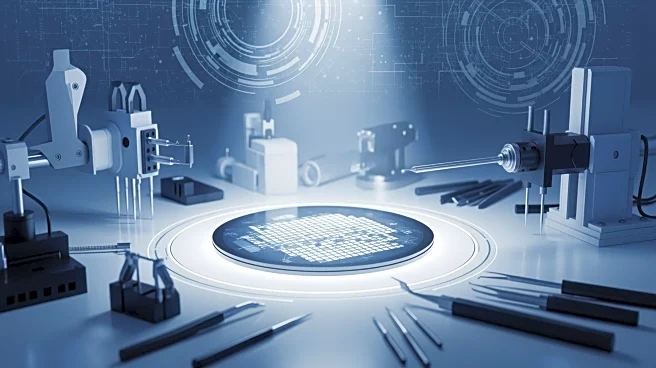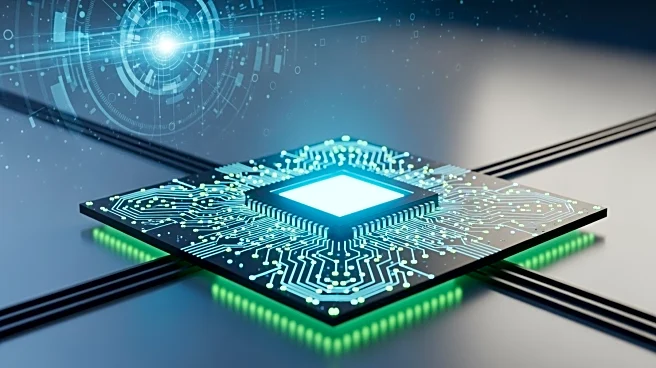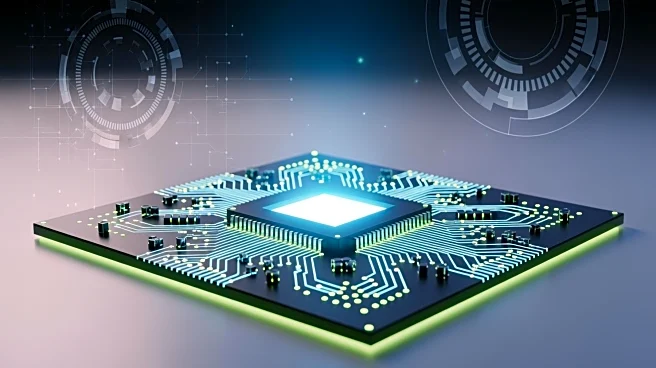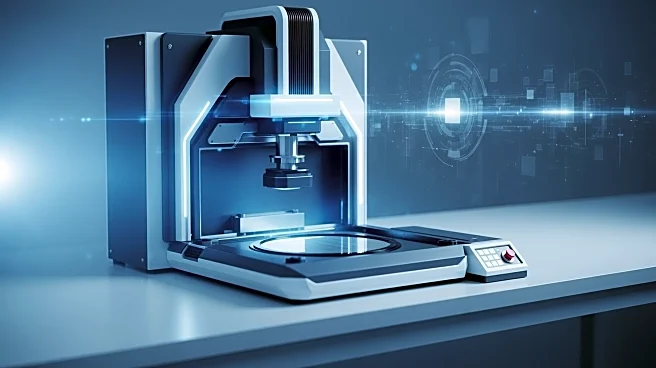What's Happening?
The Indian government is advancing its efforts to achieve self-reliance in chipset manufacturing, as announced by Union Minister for Electronics and Information Technology Ashwini Vaishnaw. The initiative
includes the development of indigenous chipsets for CCTV cameras and mobile phones, aiming to secure the country's electronics supply chain. Under the Design-Linked Incentive (DLI) programme, India has already developed complete chipsets for CCTV cameras, with plans to fulfill domestic requirements within the country. Additionally, the government is working on integrating the NavIC chipset, an indigenous navigation satellite system, into mobile phones as an alternative to GPS. A joint team from IBM and IIT Madras has been sanctioned with ₹200 crore to develop an energy-efficient server-grade microprocessor. This initiative is part of the broader India Semiconductor Mission (ISM) launched in December 2021, which aims to strengthen the semiconductor design ecosystem in India.
Why It's Important?
This development is significant as it represents a strategic move by India to reduce dependency on foreign electronics and enhance national security through self-reliant technology. By developing indigenous chipsets, India aims to secure its electronics supply chain and foster innovation within its borders. The initiative could lead to increased production and export capabilities, contributing to economic growth. Furthermore, the integration of the NavIC chipset in mobile phones could provide a reliable alternative to GPS, enhancing navigation capabilities. The collaboration with IBM and IIT Madras to develop a server-grade microprocessor highlights India's commitment to advancing its technological infrastructure, potentially positioning the country as a key player in the global semiconductor industry.
What's Next?
The Indian government plans to continue its efforts towards self-reliance in electronics manufacturing, with a timeline of one and a half years for the development of indigenous chipsets for CCTV cameras. The integration of the NavIC chipset in mobile phones is expected to be completed within two years, ensuring that every phone is equipped with either NavIC or GPS plus NavIC. The ongoing collaboration with IBM and IIT Madras will focus on creating an energy-efficient server-grade microprocessor, which could lead to further advancements in India's semiconductor capabilities. As these initiatives progress, India may see increased investment in its electronics sector, potentially attracting global manufacturers to collaborate and innovate within the country.
Beyond the Headlines
The push for self-reliance in chipset manufacturing could have broader implications for India's technological and economic landscape. By fostering a vibrant startup ecosystem in chip design, India is likely to see an increase in intellectual property creation, which could be embedded in products by leading global manufacturers. This shift towards indigenous technology may also influence India's geopolitical stance, as it reduces reliance on foreign technology and strengthens national security. Additionally, the focus on energy-efficient microprocessors aligns with global sustainability goals, potentially positioning India as a leader in eco-friendly technology solutions.












